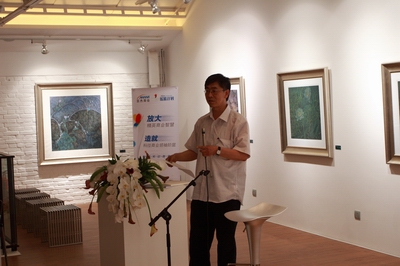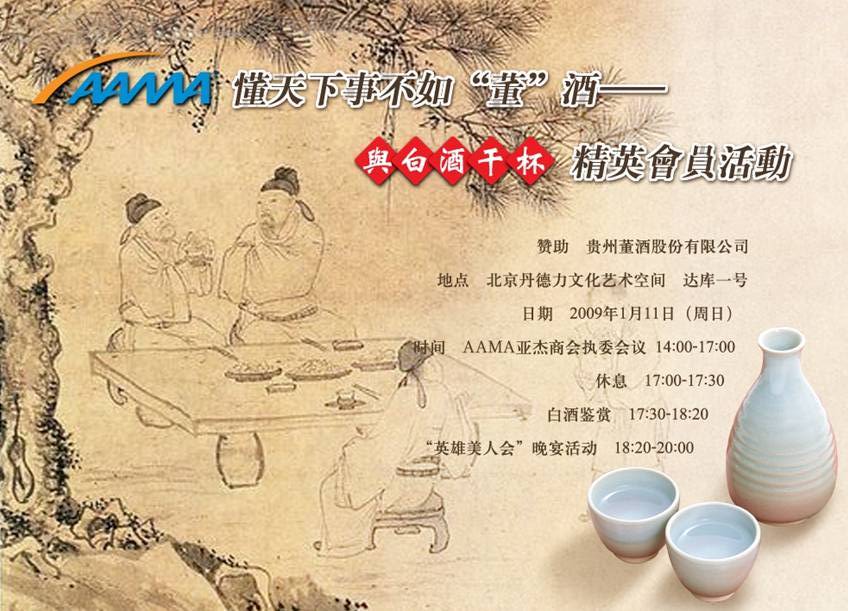(An oral account by Bo Yun, and edited and written by Dandeli Gallery)
When I taught undergraduate and postgraduate students at TsinghuaUniversity, I found that the older and the more experienced a student became the more intellectual he or she would be. It is said that one who succeeds in one area can comprehend the whole world through correlation and analogy. Therefore, my speech today will be an easy one and will stimulate more interaction.
Today, I will talk about art collection. I’d like to put forward few questions: why do we collect art? What kind of art can we collect? What are the criteria for good art? These are essential questions, but never taught nor answered even in art school. It may seem that people begin to collect art only when they are wealthy. Actually, it’s our nature to collect beautiful things. Take a look at the kids around us, a young girl loves beautiful dolls and she will collect as many as her mother permits. Take my son as another example: when he was small, he liked the Transformers so much, and also collected Nike sports shoes. After growing up, he collected other things he liked. In the future, I believe, he will collect art. Collection is in our nature.
Humans have different levels of needs. The physiological needs such as the need to eat and the need to regulate body temperature are at the lowest level. When these basic needs are met, the desire for beautiful things will emerge. Even a cave house in the remote village of Northern Shan Xi Province in China is full of artwork, with decorative papercuttings and cloth-made tigers in the windows. These are no different from the collections at the Louvre in Paris, but they are different levels of collection. While I’m talking about the collection of art and not the speculation of art, people often confuse the two. An auction house attendant may pay a large sum of money for an artwork without even seeing it, then put it in a stock room for a few years, and when the price has grown, he will sell it for a huge profit. That is not art collection.
So, why do we collect art? For the profit that an artwork can bring us in near future? I should say no. The principle of art collection is that you like it and you are moved by it. I assure you that you won’t regret collecting the works you like and it would be almost impossible to lose money in this business. Ma Weidu, an established collector, is a good example. In the 1980s and 90s when he was an editor for a publishing house with a salary of few hundred RMB, he had a passion for Chinese antiques. Every weekend, he would spend all his money at Pan Jia Yuan Open Market buying all kinds of porcelains to bring back home. His wife would always get into arguments with him because they had little money left for living expenses. What is the current return on his favorite work? The price has been exceedingly multiplied. I don’t think that everyone can be lucky as he is, but your collection will reward you only if you are touched by it and you acquire it with passion. Of course, we are inspired by a diverse range of things; it could be paintings, sculptures, photographs, gallipots, etc.
Now I will talk about the criteria for good art; how we can differentiate a good one from a bad one. One of my childhood friends made a lot of money in businesses and he now wants to get into the art collection market. I asked him how to make judgments regarding the quality of an artwork. He said it’s pretty easy; any work sold at a high price is good. In the art market, especially in China’s current market, there are a large number of people who evaluate art by price and speculate in artworks. I just read an article on the web talking about how the art business operates. First, the investor finds a painter with good skills, and buys out his works at a price slightly higher than the market price for 3-5 years; then brings the works to the auction house step by step, and his employees or partners act as buyers to hype up the market by biding and pushing the price up; there will be some inexperienced collectors or opportunists who will eventually be on the hook. In the short term, the investor can make huge profits on the artworks. Nobody knows if the price can be maintained in the long term and what the end-result will be. So where can we avoid being tricked? In a gallery, like Dandeli Gallery. In a gallery, the price of an artwork as well as its background and skill level of the artist are transparent since baloney and speculation will injure the brand image of the gallery. Generally speaking, the price of an artwork in a gallery won’t be in the millions or billions. Even if its an established artist who has been recognized by art historians, the price of his or her work is still much lower than it would be in an auction house. In addition, there are other cultural elements influencing the price of artwork in China’s art market. For instance, Chinese people used to rank the social status of a person in terms of the level of his official position. Liu, Bingsen’s calligraphy work was sold at 80,000 RMB, almost double what it had been, after he became the member of standing committee of Chinese People's Political Consultative Conference. After he passed away a few years ago, the price actually depreciated. Some buyers have blind-worship in a person’s title, such as a member of China National Association of Fine Arts or a professor in Central Academy of Fine Arts. Thus, how a piece of artwork is priced in the Chinese art market sometimes does not match the quality of the art.
Next, I will briefly talk about three levels of quality in art. The first one is the technique level. If a painter has good technique, then his or her works can cheat outsiders and the laical. Technique can be quickly improved through study and practice, and many painters have the potential to reach a high level of skill. The second level is the culture of a painter. There is a saying in the art world: it is a painter’s culture that assists one in approaching the peak of one’s art career. The highest level is artwork that has soul. There are very few artists who can reach this level in art history. The soul of an artwork means that the work expresses a painter’s unique view to the world. During the Renaissance, there were large numbers of artists who painted well, but very few works with soul; da Vinci’s works were among the rare. Michelangelo emancipated heroism from marbles and rocks, which cannot be achieved by most sculptors.
There are two-three modern painters at the highest level in China. In my opinion, Qi Baishi and Xu Beihong are soul-painters. You may ask me why; even some beginners can reproduce Qi’s work of shrimp in facsimile. Actually, it’s not difficult for a work to be as good as Qi at the technique level, but almost impossible at the soul level. Qi transformed his working style at the age of 60 and consequently reached his peak. When people get old and have less energy, they are not as aggressive and enterprising as they were in their young age, and they have to turn to memory for comfort and joy. Qi represented his memory by painting. His childhood: two chicks struggling for an earthworm, a biddy leading her kids, a young shepherd coming back home, were all emerging under his brush and ink. Unexpectedly, he made Chinese traditional bird-and-flower painting and scholar painting fresh and new, and broke through the borderline between refinement and popular taste. If he were dead in his fifties, he wouldn’t have reached such achievement in his art.
Zhao Xiuhuan is now a painter of culture. We knew each other since we were studying in the affiliated school of the Central Academy of Fine Arts. After graduation, we were then sent to labor in a rural area. Her life was leaving clear traces in her paintings. She suffered from social discrimination and exclusion because of her parentage since she was very young, and got into a failure of marriage before her middle age. However, she never gave up painting and successfully created a Utopia with brushes. Art is like religion, love or even drugs, which can remove you temporarily from a depressing reality. Unconsciously, Zhao build up her idealized world of birds and flowers on paper.
At technique level, she is a master, and her work is different from the Chinese traditional paintings of flowers and birds. In Chinese tradition, line drawing and blank spaces on paper are most important, but she creates with the influence from western art. She uses perspective, light and shade, varying tones of colors to outline objects, which enriches Chinese art language. Her work is like a close-up of a part of a landscape: a viewer is standing in and looking at the view, and then goes into a particular part of it. So I called her work a partial landscape. In front of her paintings, a viewer will fall silent in deep thought. Your memory and thinking are awakened by her paintings.
In conclusion, while you are appreciating artwork, you should believe in your own feelings and judgment; it is not an accident to recall something when you are reading a work of art. When you start to collect art, please keep this in mind: to buy a work that can touch you!









